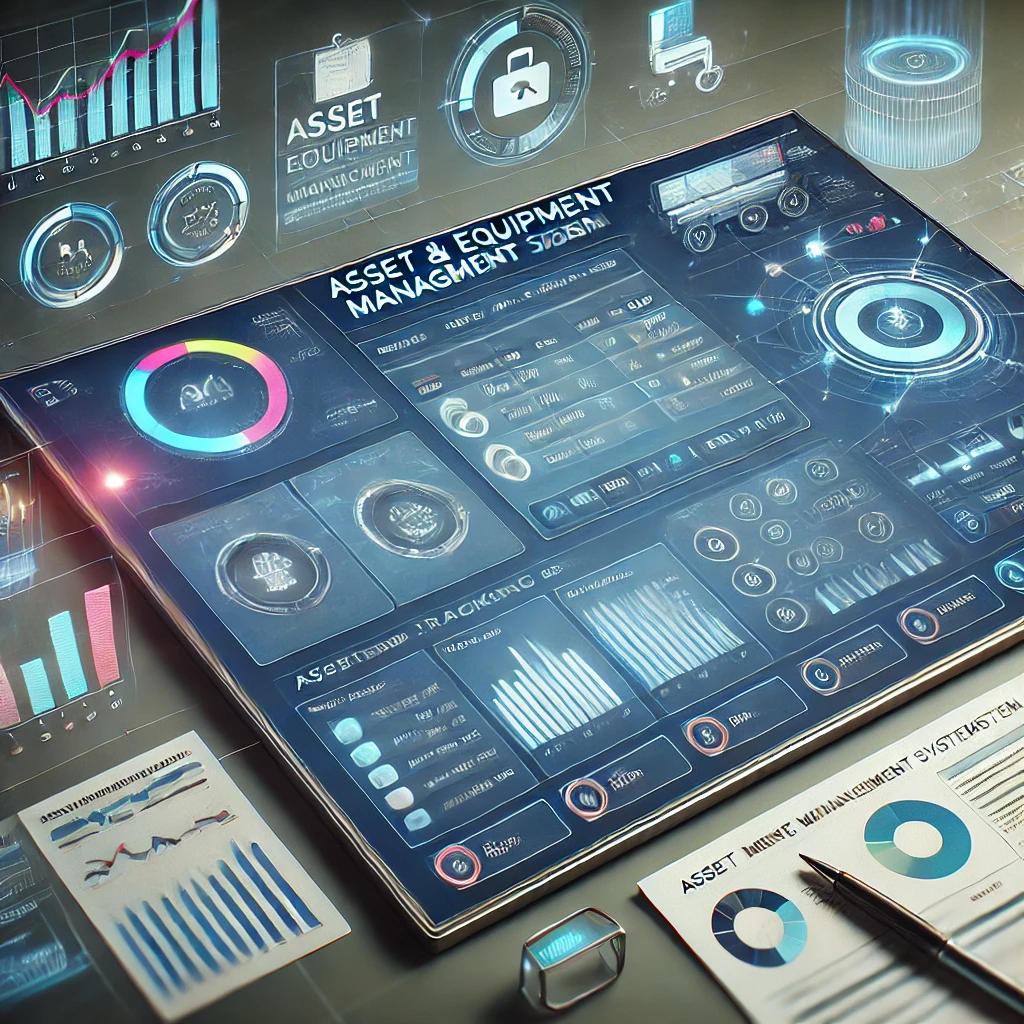
Universal Asset & Equipment Management System Software
Streamline, track, and optimize asset and equipment management with ZEBSOFT for improved efficiency and control.
Streamline, track, and optimize asset and equipment management with ZEBSOFT for improved efficiency and control.
Asset register, Inspection and maintenance management
Asset Management is the control & maintenance of assets an essential activity for business continuity, our enterprise asset platform enable complete control & visibility of all tangible & intangible assets with infinite drill down possibilities.
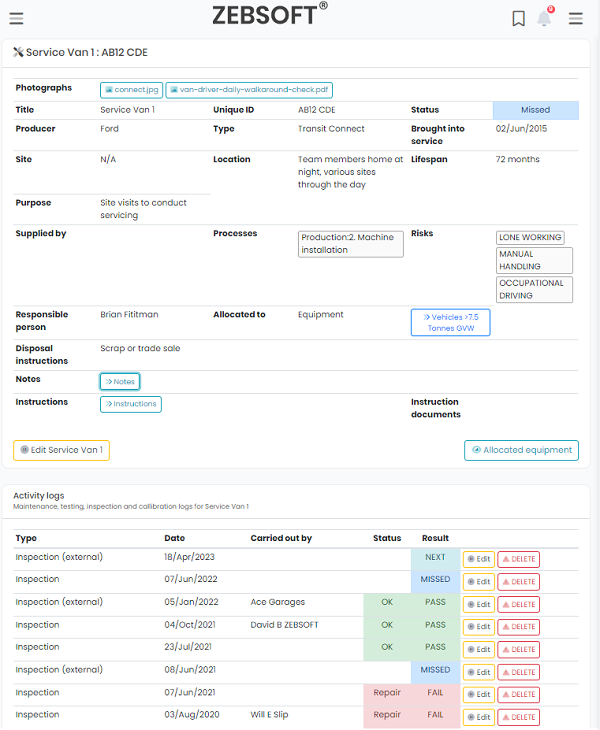
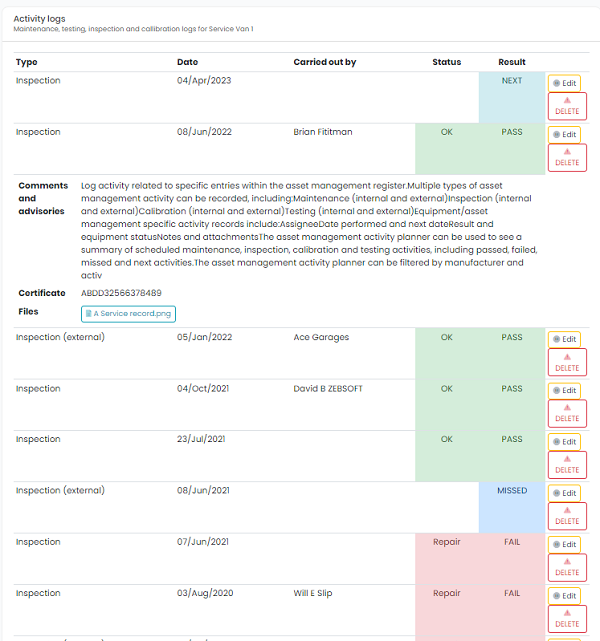
Asset Records with Complete Historical Activity Log
ZEBSOFT provides comprehensive asset records, maintaining a detailed activity log for every asset to track its complete history and management.
- Log Activity for Specific Asset Entries: Record all activities related to individual assets in the asset management register for full traceability.
- Multiple Asset Management Activities: Track various types of asset management activities, including:
- Maintenance (internal and external)
- Inspection (internal and external)
- Calibration (internal and external)
- Testing (internal and external)
- Detailed Activity Records: Each activity record includes:
- Assignee: Track the individual responsible for the activity.
- Date Performed & Next Date: Log the date of completion and the scheduled next activity.
- Result & Equipment Status: Record the outcome of the activity and the current status of the equipment.
- Notes & Attachments: Attach additional notes and documents for further context and documentation.
- Asset Management Activity Planner: Use the planner to view a summary of scheduled maintenance, inspections, calibrations, and testing activities. Track statuses such as passed, failed, missed, and upcoming activities.
- Filter by Manufacturer and Activity Type: Filter the asset management activity planner by manufacturer and activity type to focus on specific areas of your asset management.
ZEBSOFT ensures that all asset-related activities are thoroughly tracked, providing valuable insights into the health, performance, and compliance of your equipment.
Associate Assets with Key Organizational Elements
ZEBSOFT enables the seamless association of assets with critical components of your business, ensuring better visibility and management.
- Suppliers of Products & Services: Link assets to their respective suppliers to track source and service information.
- Processes in Which They Are Used: Associate assets with the specific processes they support or are involved in, improving operational visibility.
- Risks Specific to Them: Identify and link risks directly to assets, allowing for proactive risk management and mitigation.
By associating assets with suppliers, processes, and risks, ZEBSOFT helps ensure streamlined asset management and improved organizational efficiency.
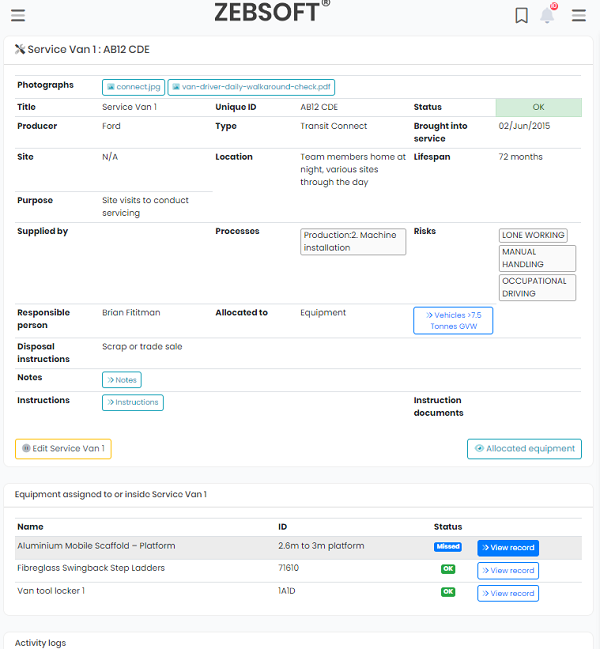
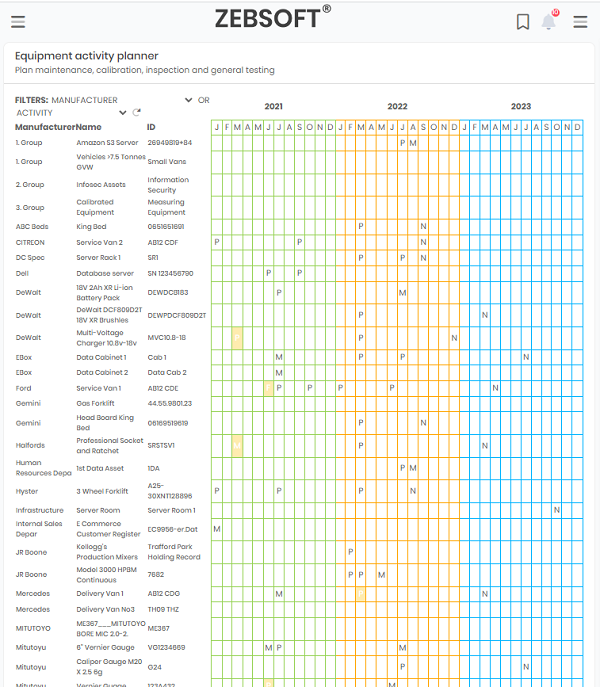
Asset Management Activity Planning with ZEBSOFT
ZEBSOFT makes asset management activity planning efficient and transparent, providing easy access to asset statuses and detailed activity tracking.
- Easy Asset Status View: Quickly view the current status of assets, helping you stay on top of maintenance and performance.
- Direct Access to Asset Records: Easily navigate to the full asset record for more detailed information with just a click.
- View Planned Activities for Up to 3 Years: Plan and track asset activities, including maintenance and inspections, up to three years ahead, ensuring long-term planning.
- Create Asset Groups and Drill Down: Organize assets into groups and drill down through multiple levels for detailed analysis and management.
ZEBSOFT enhances asset management planning, making it simple to track, plan, and optimize your assets’ lifecycle and activities.
ZEBSOFT Asset Management Software: Streamline Asset Lifecycle Management
ZEBSOFT Asset Management Software provides a comprehensive platform for managing a wide variety of assets throughout their entire lifecycle. It enables businesses to track and optimize asset usage, reduce downtime, and ensure compliance.
Manage Various Asset Types:
- Calibrated Instruments & Equipment
- Data & Information Assets
- Fleet Assets
- Properties & Facilities
- Software & Applications
- Equipment & Machinery
- IT Hardware
- Infrastructure Assets
Key Features of ZEBSOFT Asset Management Software:
- Full Lifecycle Management: Track assets from purchase to disposal, including maintenance, inspections, and testing.
- Real-Time Tracking: Use RFID, QR codes, and GPS to track asset location and status in real-time.
- Mobile Access: Access asset data from anywhere, anytime with mobile apps, ensuring field teams and maintenance engineers stay connected.
- Preventive Maintenance: Schedule maintenance, reduce downtime, and extend asset life through proactive planning.
- Accurate Asset Register: Maintain a centralized, up-to-date record of all assets, accessible on both desktop and mobile devices.
Benefits of Using ZEBSOFT Asset Management Software:
- Maximizes Asset Lifespan: Extend the life of mission-critical assets by scheduling regular maintenance and monitoring their condition.
- Improves Efficiency: Streamline asset tracking and reduce manual record-keeping, eliminating errors from spreadsheets.
- Enhances Compliance: Maintain compliance with health, safety, and environmental standards by tracking and managing asset-related activities.
- Cost Reduction: Lower maintenance costs and prevent costly unplanned downtime by monitoring asset performance and scheduling preventive actions.
- Improves Inventory Management: Track inventory in warehouses and manage stock efficiently, ensuring better decision-making for procurement, maintenance, and disposal.
What is Asset Management Software?
Asset Management Software is a cloud-based tool that helps businesses track and manage their assets, including hardware, software, equipment, and tools. It simplifies asset lifecycle management by centralizing data from purchase to disposal, improving inventory management, and enhancing maintenance scheduling.
Asset Management for Businesses with Multiple Assets:
- Increased Asset Visibility: Track assets in real-time, improving visibility and reducing loss or misplacement.
- Reduced Unplanned Downtime: Automate maintenance scheduling to minimize unexpected asset failures and reduce repair costs.
- Asset Depreciation Tracking: Monitor depreciation values to make informed decisions about asset purchases and disposal.
- Comprehensive Reporting: Generate reports to assess asset performance, lifecycle status, and maintenance costs.
Industries That Benefit from Asset Management Software:
- Property & Facilities Management: Track property assets, maintenance schedules, and manage operational costs.
- IT Asset Management: Manage IT hardware, software licenses, and ensure compliance with vendor contracts.
- Fleet Management: Monitor fleet asset status, plan preventive maintenance, and track fuel consumption to reduce costs.
- Machinery & Equipment Management: Schedule proactive maintenance and manage the full lifecycle of machinery to avoid unplanned downtime.
ZEBSOFT Asset Management Software for All Asset Types
From machinery and fleet management to software and IT assets, ZEBSOFT provides a flexible, scalable solution to manage all types of assets. Whether for tracking physical assets in the field or managing digital assets, ZEBSOFT helps you optimize operations, ensure compliance, and drive efficiency across your business.
Do you want to know more?
Zebra Software Limited
- Head office: Booths Hall, Booths Park, Knutsford, Cheshire, WA16 8GS.
- Registered office: Riverside, Mountbatten Way, Congleton CW12 1DY, United Kingdom
- Registered in England and Wales 11901161
- ICO number A8778081
Corporate

